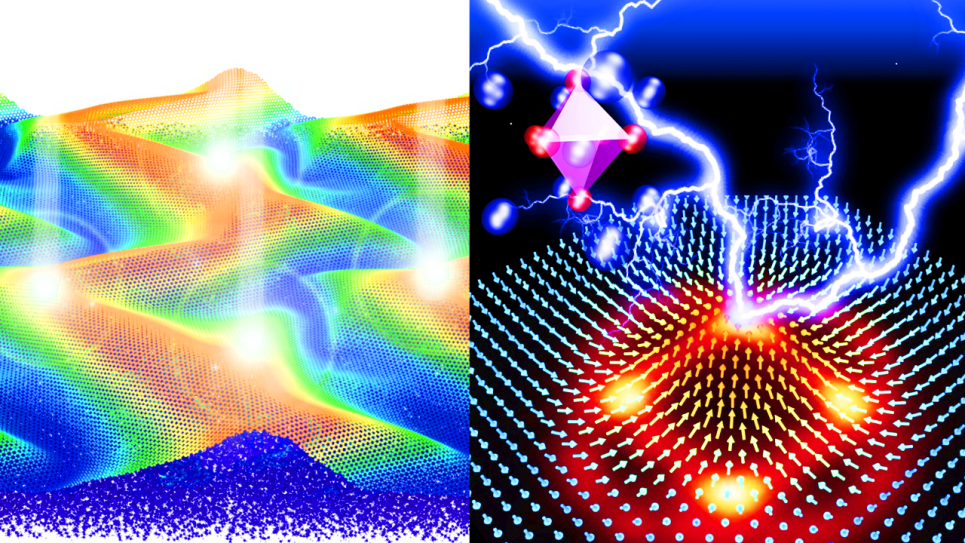
(Left) Self-assembled quantum emitter array in atomically thin metastructures. (Right) Topological switching in ferroelectrics. Image: Thomas Linker, Anikeya Aditya, and Ken-ichi Nomura, University of Southern California
This project advances scalable manufacturing of quantum materials and ultrafast control of their emergent properties on demand using AI-guided exascale quantum dynamics simulations in tandem with state-of-the-art x-ray, electron-beam and neutron experiments at DOE facilities.
This project advances scalable manufacturing of quantum materials and ultrafast control of their emergent properties on demand using AI-guided exascale quantum dynamics simulations in tandem with state-of-the-art x-ray, electron-beam, and neutron experiments at DOE facilities:
(1) Self-assembly of layered material (LM) metastructures (i.e., atomically thin origami) for scalable and robust manufacturing of quantum emitters for future quantum information science and technology.
(2) Picosecond optical, electrical and mechanical control of symmetry breaking in topological ferroelectric skyrmion, skyrmionium and meron for emerging ultralow- power polar “topotronics”.
As part of their work, the researchers perform reactive molecular dynamics simulations to computationally manufacture these materials, followed by nonadiabatic quantum molecular dynamics and neural-network quantum molecular dynamics (NNQMD) simulations to study their ultrafast control guided by AI.
The team’s computational breakthrough, the Allegro-Legato NNQMD model, built on the Allegro model by Boris Kozinsky’s group at Harvard—with state-of-the-art accuracy, speed and robustness based on group-theoretical equivariance, locality of descriptors, and sharpness-aware minimization of loss landscape—enables unprecedentedly large spatiotemporal-scale NNQMD simulations with spectroscopically stable trajectories to explain the highest-resolution inelastic neutron scattering experiment.